
Nicolaes Pieterszoon Berchem was a highly esteemed and prolific Dutch Golden Age painter of pastoral landscapes, populated with mythological or biblical figures, but also of a number of allegories and genre pieces.

Willem van de Velde the Elder was a Dutch Golden Age seascape painter, who produced many precise drawings of ships and ink paintings of fleets, but later learned to use oil paints like his son.

Adriaen Pietersz van de Venne, was a versatile Dutch Golden Age painter of allegories, genre subjects, and portraits, as well as a miniaturist, book illustrator, designer of political satires, and versifier.
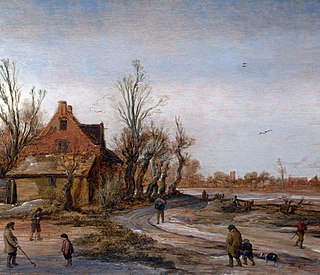
Esaias van de Velde was a Dutch landscape painter.

Adriaen van Utrecht was a Flemish painter known mainly for his sumptuous banquet still lifes, game and fruit still lifes, fruit garlands, market and kitchen scenes and depictions of live poultry in farmyards. His paintings, especially the hunting and game pieces, show the influence of Frans Snyders. The two artists are considered the main inventors of the genre of the pronkstillevens, i.e. still lifes that emphasized abundance by depicting a diversity of objects, fruits, flowers and dead game, often together with living people and animals. Van Utrecht also painted a number of flower still lifes. He was a regular collaborator with leading Antwerp painters who had been pupils or assistants of Peter Paul Rubens, such as Jacob Jordaens, David Teniers the Younger, Erasmus Quellinus II, Gerard Seghers, Theodoor Rombouts, Abraham van Diepenbeeck and Thomas Willeboirts Bosschaert.

Filippo Baldinucci's Notizie de' Professori del Disegno, Da Cimabue in qua, Secolo V. dal 1610. al 1670. Distinto in Decennali was a major art biography of Baroque painters. Written by the erudite Florentine professor of the Accademia della Crusca, it is often verbose and rife with factual errors; however, it is a broad compendium of stories about generally contemporaneous Baroque painters.
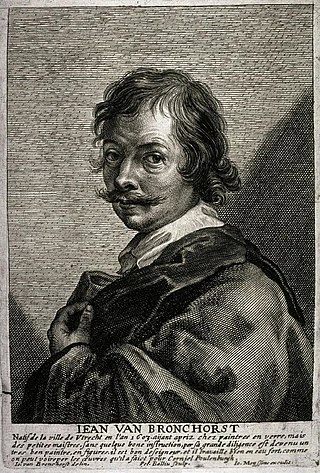
Jan Gerritsz van Bronckhorst was a Dutch Golden Age painter and engraver. He is considered today to be a minor member of the Utrecht Caravaggisti.
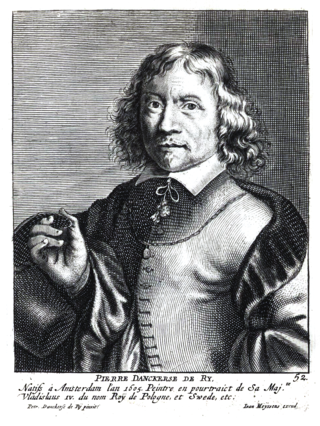
Pieter, Peeter, or Peter Danckerts de Rij, Dankers de Ry, or Peteris Dankersas. was a Dutch Golden Age painter mostly active in the Polish–Lithuanian Commonwealth and Sweden.

Gaspar de Witte was a Flemish painter who is known for his landscapes and gallery paintings.

Salomon (de) Koninck was a Dutch painter of genre scenes and portraits, and an engraver.

Johannes Mytens or Jan Mijtens, or "Mytens" to the English was a Dutch Golden Age painter, almost entirely as a portraitist.
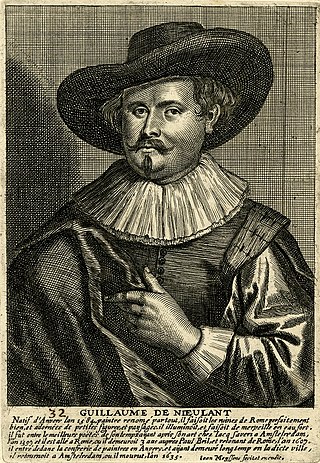
Guilliam or Willem van Nieulandt or van Nieuwelandt (1582/84–1635) was a Flemish painter, engraver, poet and playwright from Antwerp. He spent two thirds of his career in the Habsburg Netherlands and the remainder in Italy and the Dutch Republic. He is known for his Italianate landscape paintings and prints, often real views or capricci of landscapes and buildings from in or around Rome enlivened by contemporary figures or biblical or mythological scenes. He is regarded as the principal poet and playwright active in the Habsburg Netherlands in the first three decades of the 17th century.

Alexander Adriaenssen was a Flemish Baroque painter, particularly known for his still-lifes of fish and game pieces. He also painted banquet pieces with food and flower still lifes.

JoannesMeyssens was a Flemish Baroque painter, engraver, and print publisher.
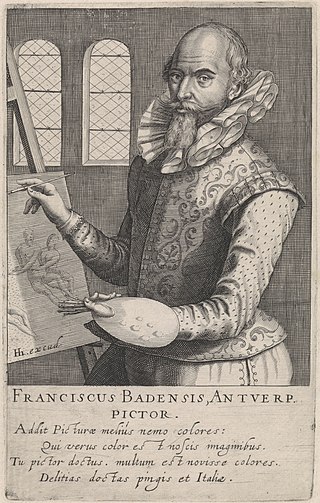
Frans Badens was a Flemish-born painter who was active in Amsterdam where he was known for his mythological and biblical scenes, genre scenes, portraits and still lifes. In his lifetime he was regarded as one of the most important painters who had moved to Amsterdam and was admired for his realistic treatment of the skin.
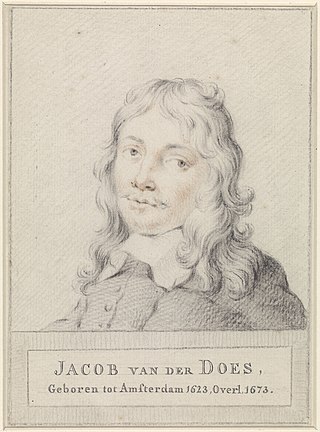
Jacob van der Does was a Dutch Golden Age landscape painter.

Pieter Isaacsz was a Danish court and portrait painter from Dutch origin who worked in a mannerist style on historical, biblical and mythological subjects. He was also a tapestry designer and art-dealer who spied for both the Netherlands, Denmark, and, eventually, for Sweden.

Gilliam van der Gouwen, first name also transcribed as Guilliam and Willem was a Flemish engraver who spent most of his active career in the Dutch Republic. He is known for his reproductive engravings and various title pages, maps and book illustrations for the Amsterdam publishers.

Adriaen van Bloemen or Adriaen Bloem was a Flemish painter, print designer, draughtsman and engraver. He was mainly a portrait artist who created individual and group portraits. He left his native Antwerp to work in Vienna where he became court painter to Emperor Leopold I. His work is mainly known through the prints made after it by various engravers.





















